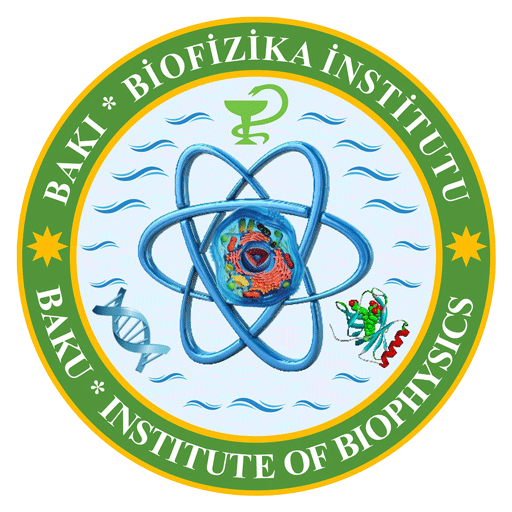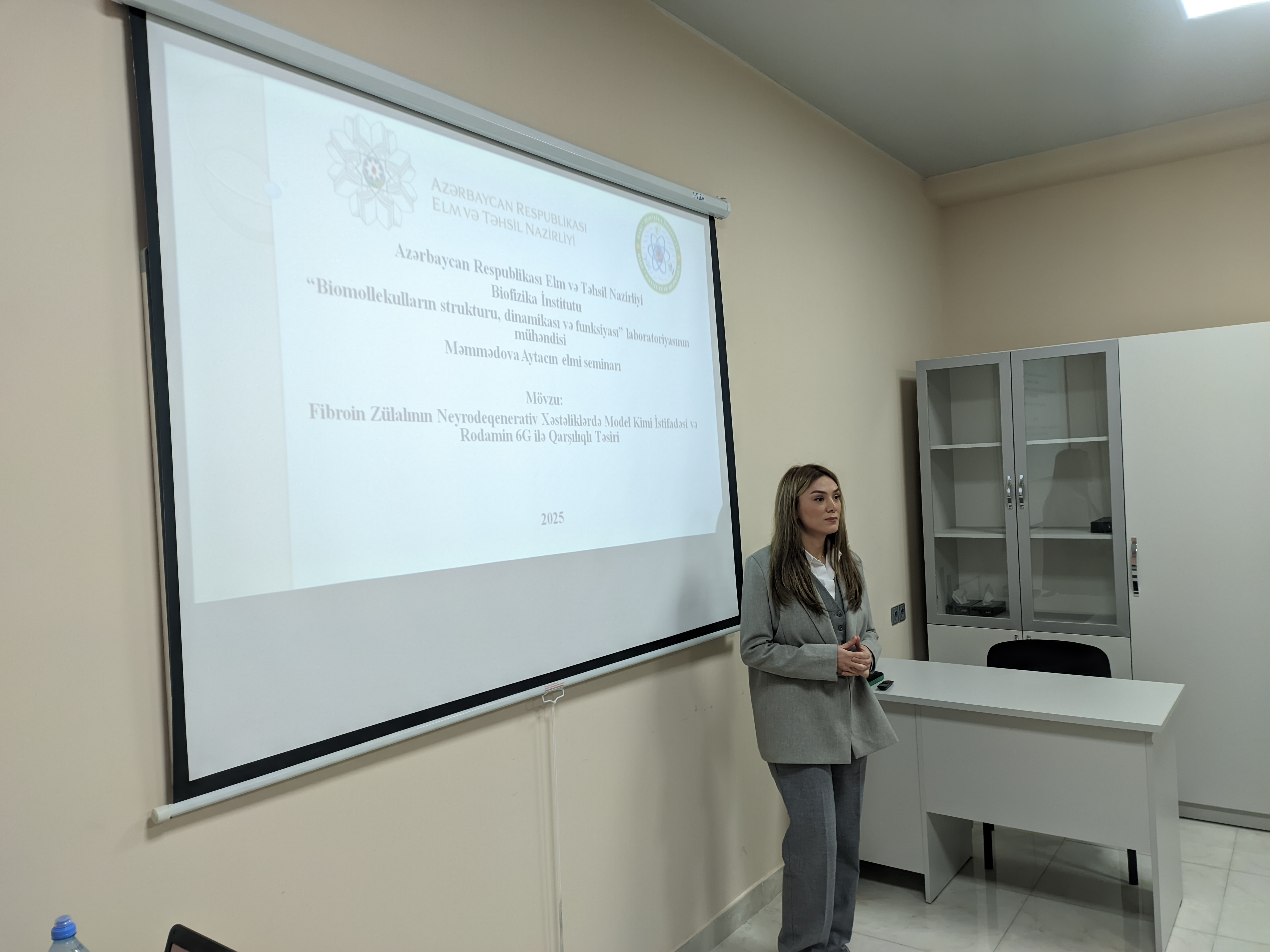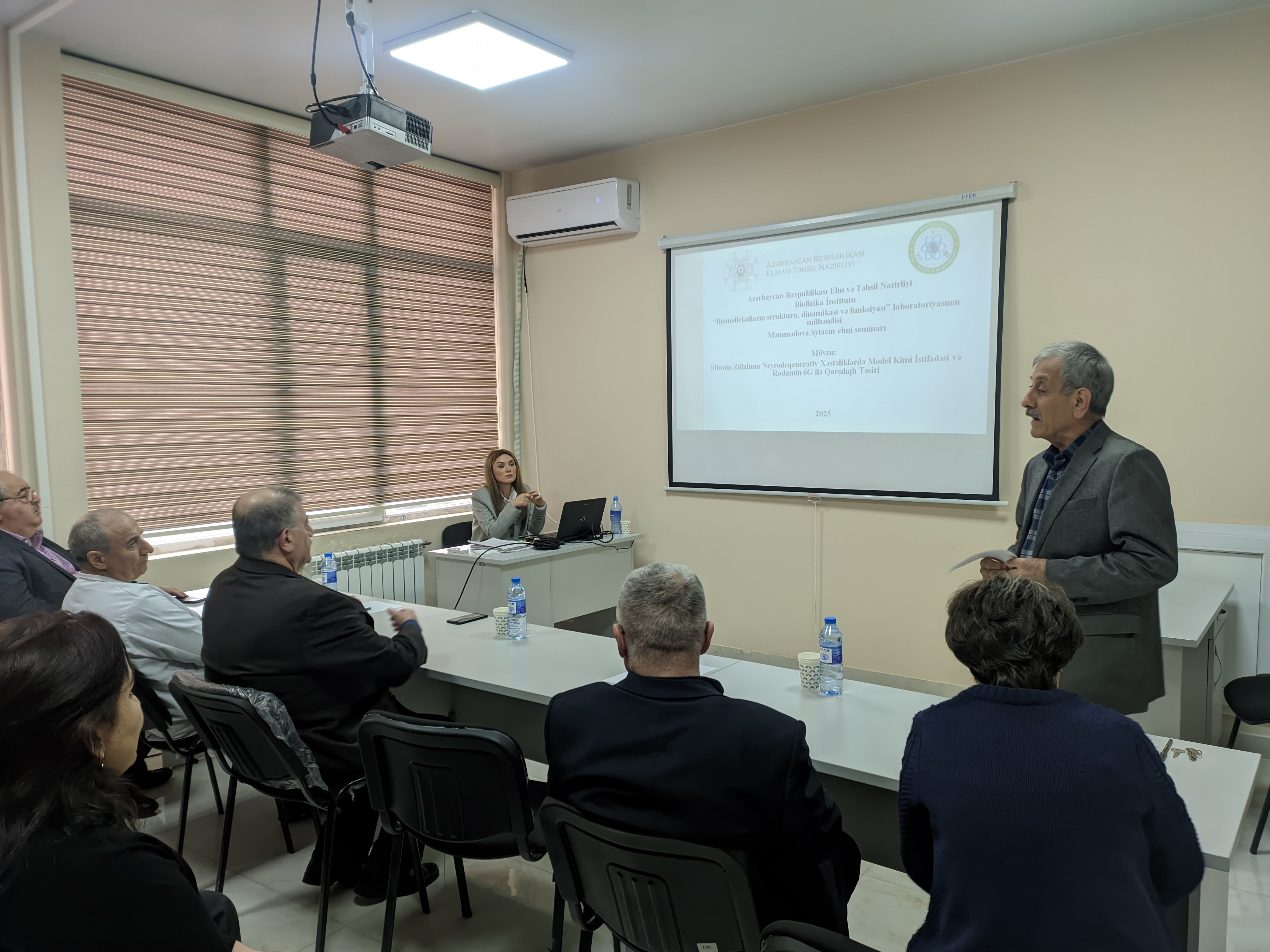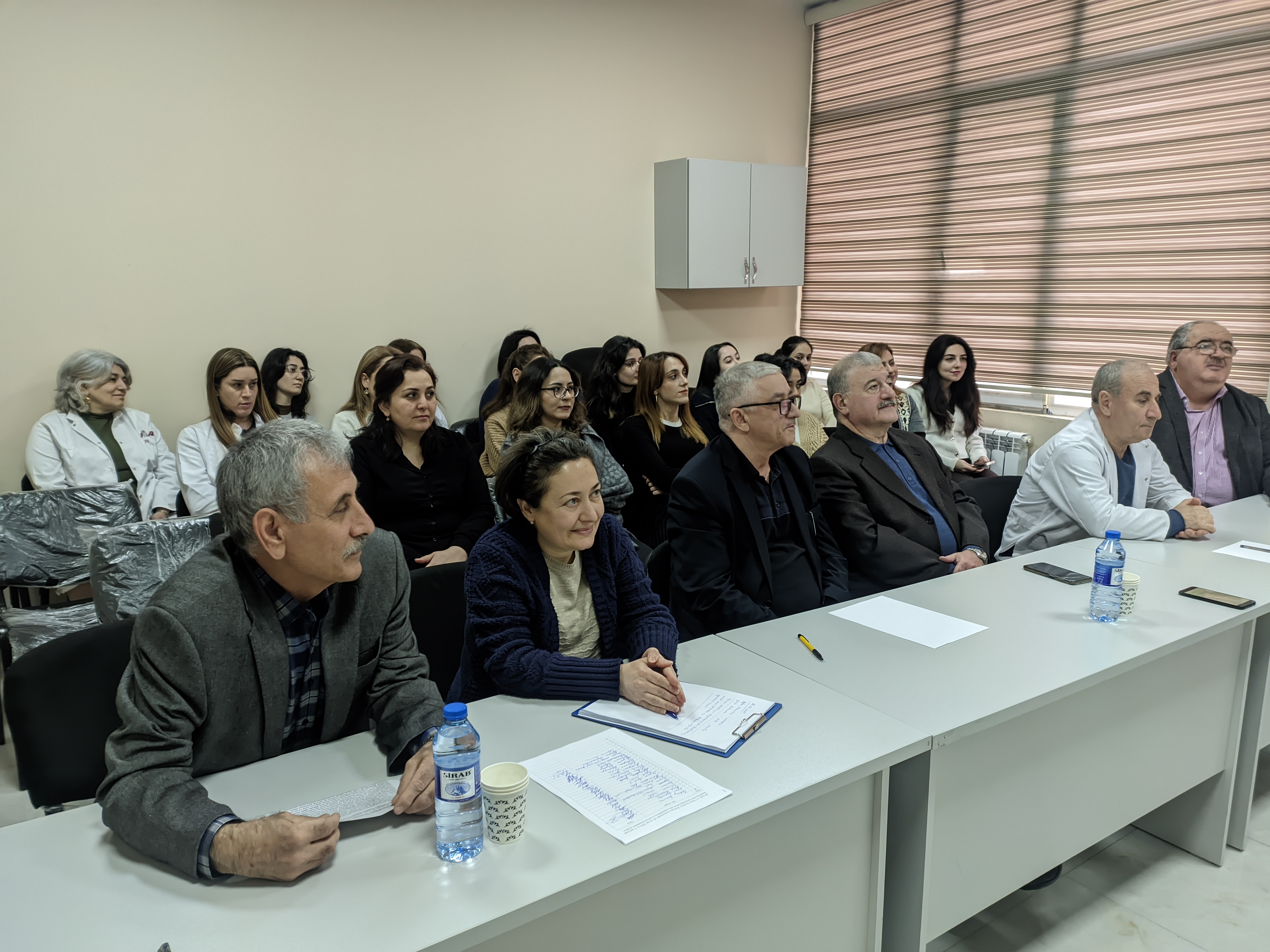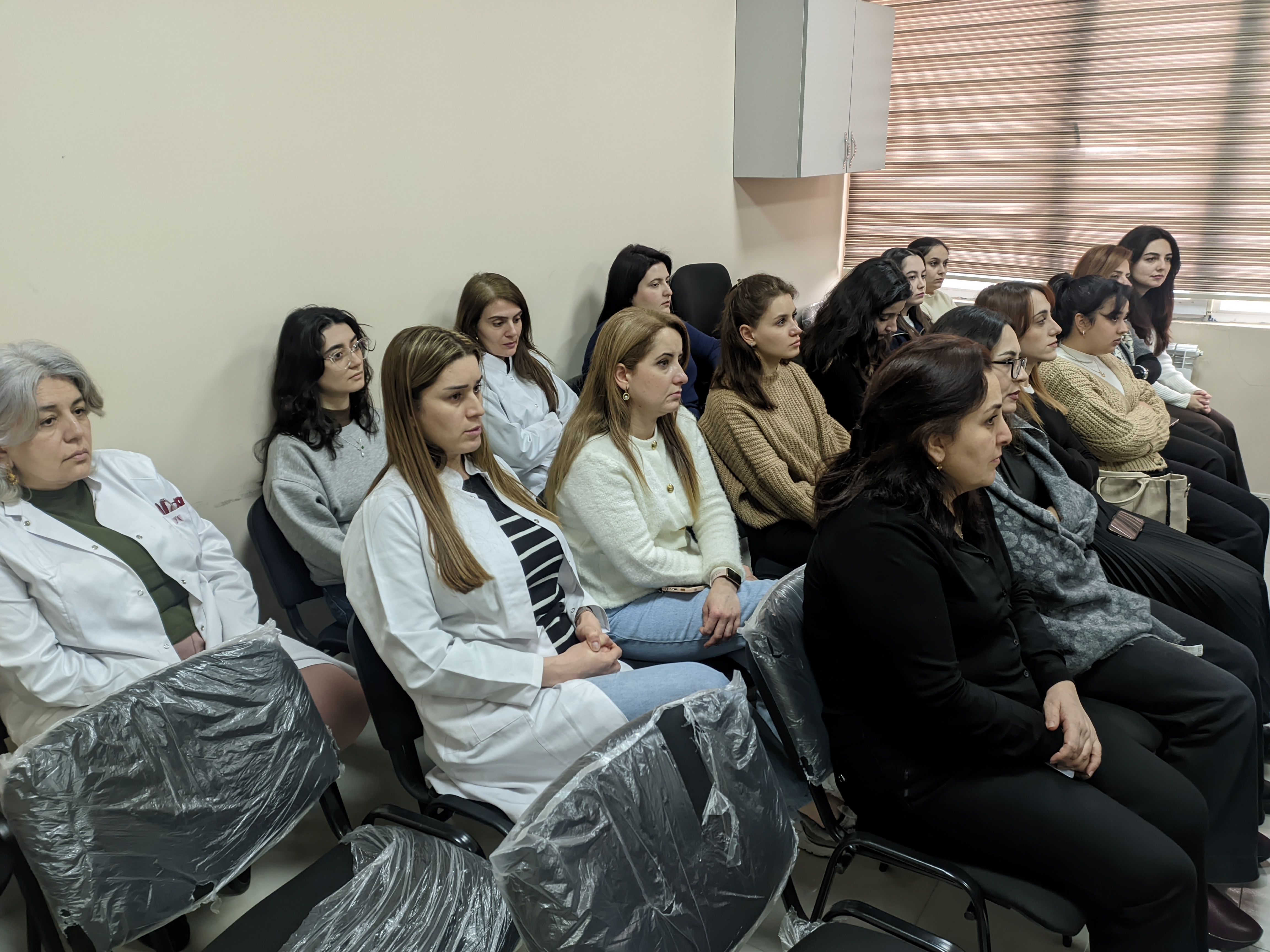A scientific seminar on neurodegenerative disease research was held at the Institute of Biophysics
A scientific seminar on neurodegenerative disease research was held at the Institute of Biophysics
A scientific seminar titled "The Use of Fibroin Protein as a Model in Neurodegenerative Diseases and Its Interaction with Rhodamine 6G" was held at the Institute of Biophysics of the MSE AR. The seminar was chaired by the institute's executive director, Doctor of Biological Sciences Karim Qasimov, who delivered the opening speech. He emphasized that the research conducted at the institute is divided into two main directions: cancer diseases and neurodegenerative diseases, including studies on the formation of beta-amyloid aggregates.
Following the opening, Aytac Mammadova, an engineer from the "Structure, Dynamics, and Function of Biomolecules" laboratory, presented her research on "The Use of Fibroin Protein as a Model in Neurodegenerative Diseases and Its Interaction with Rhodamine 6G."
In her presentation, Aytac Mammadova stated that neurodegenerative diseases are characterized by damage to nerve cells in various brain regions. Alzheimer's disease is associated with the accumulation of beta-amyloid protein in the brain, while Parkinson's disease results from the aggregation of alpha-synuclein protein, leading to a decrease in dopamine secretion. According to statistical data, 5% of people aged 65-74, 13.2% of those aged 75-84, and 33.4% of individuals over 85 suffer from these diseases.
The presentation also covered the properties of silk fibroin, a biopolymer produced by the Bombyx mori silkworm, and its potential use in modeling neurodegenerative disease research. Due to its biocompatibility, biodegradability, and multifunctional structure, silk fibroin can serve as an effective model for studying protein aggregation.
Experimental results indicated that the binding of Rhodamine 6G dye to the fibroin matrix creates specific molecular-level interactions, confirmed through fluorescence spectral analysis. Notably, fibroin was found to inhibit the formation of Rhodamine 6G dimers and reduce fluorescence intensity. These findings may also open new possibilities in the field of bio-optical materials.
At the end of the seminar, Aytac Mammadova’s scientific advisor, corresponding member of ANAS, professor Oktay Qasimov, highly appreciated the presentation and the conducted research, emphasizing the need for further extensive studies in this direction. He also highlighted the significance of Aytac Mammadova's methodological approach and scientific skills in experimental research.
Seminar participants asked questions about the topic and discussed the practical applications and future directions of the research.
Finally, the institute's leadership and seminar attendees expressed their gratitude to Aytac Mammadova for her presentation and wished her success in her future scientific endeavors.
